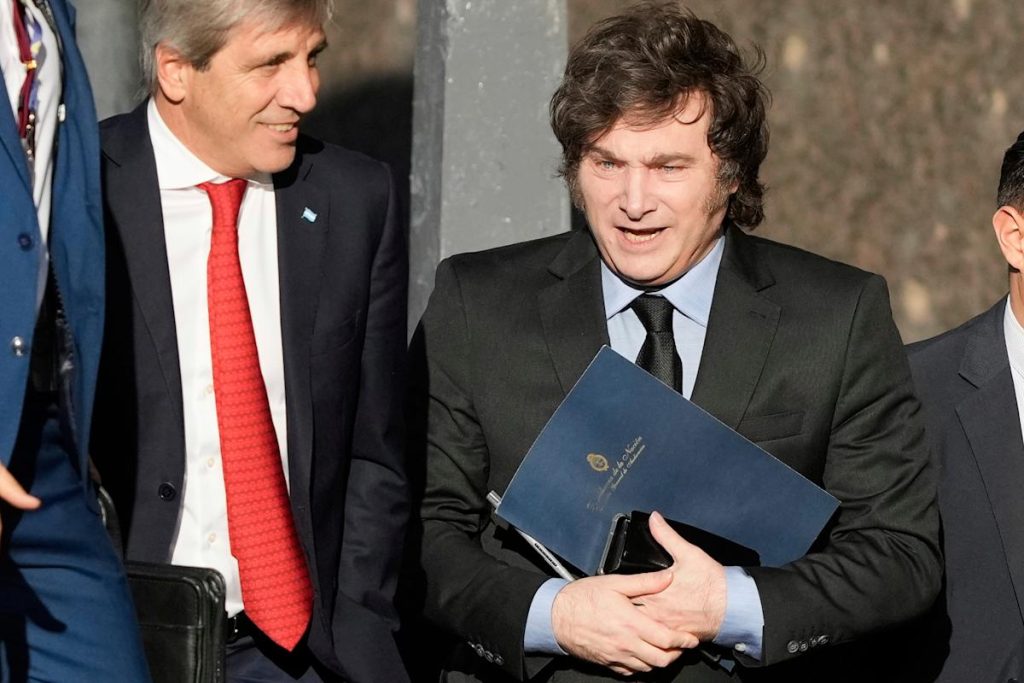
BUENOS AIRES, Argentina (AP) — The International Monetary Fund disbursed on Tuesday the first installment of Argentina’s new $20 billion loan program after President Javier Milei removed most of Argentina’s strict capital and currency controls. For years, the restrictions had set the official exchange rate and barred companies and individuals from moving money freely.
After clinching the IMF deal last week, Milei felt confident enough to take the gamble of dismantling controls as he seeks to steer the nation’s notoriously volatile economy toward the revival that he promises will follow the pain of austerity.
At a press conference beside visiting U.S. Treasury Secretary Scott Bessent, Milei was ebullient as he proclaimed Monday, when the controls lifted, the Argentine version of President Donald Trump’s “Liberation Day.”
“After 15 years of capital controls, we have cast off the anvil to which we were chained,” he said.
Argentines have been scrambling to understand what this means for them, their radical libertarian president and the wider world.
What are currency controls?
First implemented in 2011 during the populist administration of then-President Cristina Fernández de Kirchner, the half-dozen critical regulations limit access to foreign currency as a safeguard against capital flight.
Until Monday, the restrictions — popularly known as “el cepo” or “the trap” — made it almost impossible for companies to send profits abroad and for Argentines to purchase dollars. Foreign investment dried up. The central bank burned through its precious currency reserves to shore up the peso, creating multiple exchange rates and a vast black market.
Preferring to save in stacks of $100 bills stashed under mattresses than in their own chronically depreciating currency, middle-class Argentines sold their pesos on the black market rate, which was 1,375 pesos to the dollar last Friday, compared with an official rate of 1,097 pesos.
Milei retained the controversial exchange rate system with a so-called “crawling peg” which, up until Monday, had prevented the peso from falling more than 1% against the dollar per month.
“It was a way to keep the dollar in check so that a depreciation wouldn’t spill over into prices,” Carlos Pagni, a prominent political columnist, wrote Tuesday in Argentina’s La Nación newspaper. “From a political perspective, Milei’s government made a commitment to a single issue — reducing inflation. This is the way to win votes, retain power, and eventually increase it.”
Why release ‘the trap’ now?